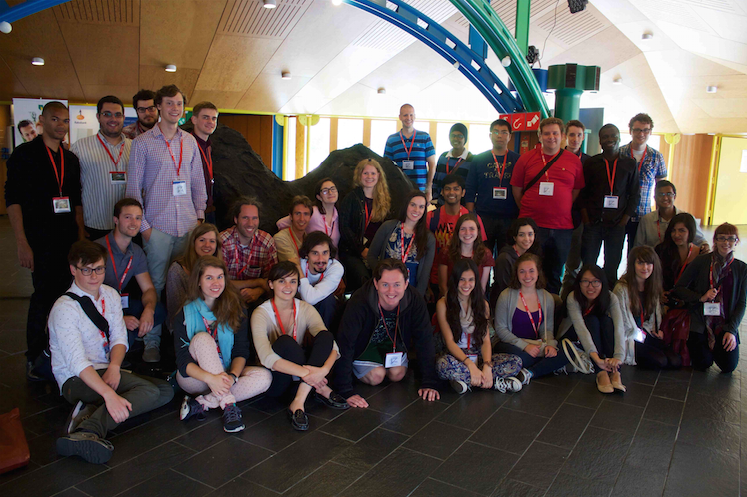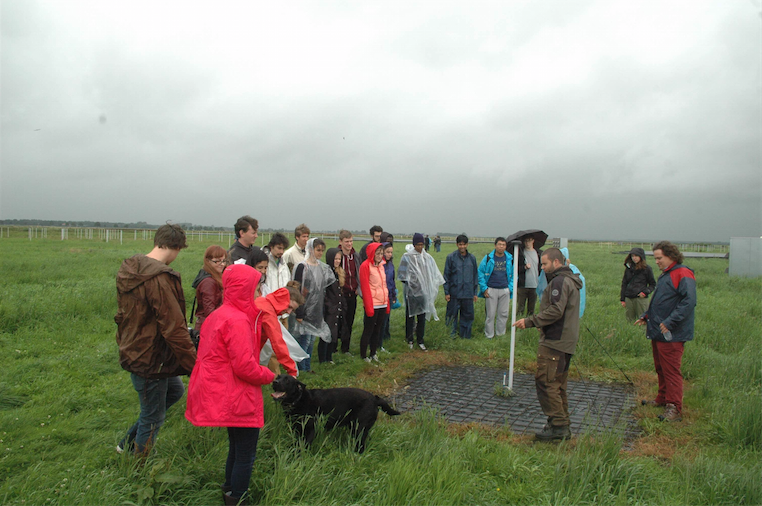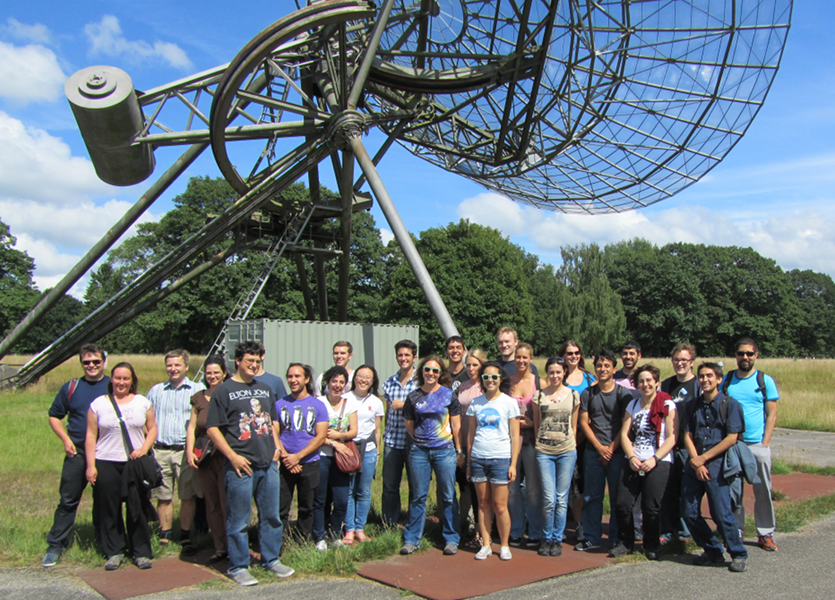Past LEAPS
LEAPS 2022

- The work of Daria Trotsenko led to a paper.
LEAPS 2021 was a huge success! Due to the COVID-19 pandemic the summer school was held virtually and we had 22 students from all over the globe. Projects ranged from studies of solar system objects comet 67P and Mars, to physical and chemical tracers of star formation, protoplanetary disks, studies of exoplanets, and finally to observations of distant galaxies. See below the group photo from our students final presentations.

- Tanya Kushwahaa published a paper on her project.
The LEAPS 2019 cohort had a great summer in Leiden and are already starting to share their research results with the world.

- The project of Elias Kyritsis led to a publication where he is a co-author (see here).
- Thomas Winterhalder published a paper on his work. A follow-up project is also under publication.
- The project of Nelly Ivanova was the basis for this work.
- Julie Korsmeyer published a paper on a follow-up project to her LEAPS work.
- Vanesa Ramirez also published a paper together with her supervisor.
LEAPS 2015 was a great success! Twenty-two students from four continents spent their
summer in Leiden doing astrophysics research.
- Joshua Borrow (with supervisor Pedro Russo) published a paper on astro-ph
entitled "A Blueprint for Public Engagement Appraisal: Supporting Research Careers."
- Lukasz Tychoniec (supervised by John Tobin) presented his research at the
Polish Astronomical Society Summit, and his research already contributed to
one published paper and he is preparing a paper on the full results.
- Tessa Wilkinson (supervised by Anna-Lea Lesage) presented her research at the
2016 American Astronomical Society meeting.
- Jeremy Dietrich (supervised by Christian Ginksi) submitted a paper to MNRAS
"Archival VLT/NaCo multiplicity investigation of exoplanet host stars".
- Maria Vincenzi (supervised by Carlo Manara) presented a poster at the workshop:
"The accretion/outflow connection in YSOs" at ESTEC in October and a paper is
in preparation.
- Hope Boyce (supervised by Nora Lutzgendorf) presented a poster at the
Canadian Conference for Undergraduate Women in Physics and a paper is in
preparation.
The 2013, and 2014 groups of LEAPS students also performed very well and the first
scientific publications are out!
- Ryosuke Goto and his advisor Sean McGee published a paper on galaxy formation in
the Monthly Notices of the Royal Astronomical Society on his LEAPS project;
"The stellar mass function and efficiency of galaxy formation with a varying
initial mass function".
See here.
- Steffi Yen and her advisor, Adam Muzzin, presented a poster at the
American Astronomical Society (AAS) winter meeting in Washington DC, "Searching
for the Most Distant Galaxy Clusters". See
here.
- Fiona Thiessen and her advisor Sebastien Besse submitted a paper on Lunar
surface composition and lava flows (figure below).
- Conny Weber worked with Agnes Kospal on infrared variability of young stars
in Chamaeleon which featured on a poster at the "The Universe Explored by
Herschel" conference in Noordwijk
(conference website).
See the poster here.
- Hannah Harris, a 2014 LEAPS student, and her advisor Pedro Russo published a
paper in the Space Policy Journal, "The Influence of Social Movements on
Space Astronomy Policy." See here.
- Saul Kohn (now a PhD student at UPenn) and his advisor David Sobral published a
paper in Monthly Notices of the Royal Astronomical Society on his LEAPS project:
"The most luminous Halpha emitters at z~0.8-2.23 from HiZELS". See here
(link here).
- LEAPS student Michael Hammer (from Cornell University) and his adviser
Lucie Jilkova studied close stellar flybys that lead some stars to lose parts of
their circumstellar discs. Using simulations in the AMUSE framework
(www.amusecode.org), they showed that if the two stars approach each other
close enough, part of the disc lost from one star can be transferred to the other
one. These close encounters can happen shortly after stars form when many stars
are clustered together. They further showed that even our Solar System might
have experienced such an interaction and stolen some material, which is now
orbiting in its outer parts, from another star. Michael presented a
poster on the results of his LEAPS project on the 225th
AAS meeting. The project eventually resulted to
publication in an international refereed journal, which led
to several press releases, for example:
New Scientist, Scientific American, Universe Today.
 Figure of the submitted paper by Fiona Thiessen, students of the LEAPS 2013 class.
Figure of the submitted paper by Fiona Thiessen, students of the LEAPS 2013 class.
(a) M
3 color composite image of the Imbrium basin (red: IBD1000, green:
IBD2000, blue: R750 nm). Numbers indicate the basalt units mapped in this work. Large
and spectrally bright craters are mapped separately in grey and were excluded from the
basalt units. The surrounding highlands and kipuckas inside the Imbrium basin are also
shown in grey. Dark strips correspond to portion of the lunar surface not observed
with M
3 using OP1B. (b) Eratosthenian basalt flows from Schaber [1973] with
flow phases I-III.

ESTEC group picture (joint tour with ASTRON summer school).

The rain could chase us away from LOFAR! (not quite drenched yet in this picture).

The 2013 LEAPS students (and some supervisors) on their visit to the Westerbork
Radio telescope in Dwingeloo, the Netherlands.




 Figure of the submitted paper by Fiona Thiessen, students of the LEAPS 2013 class.
(a) M3 color composite image of the Imbrium basin (red: IBD1000, green:
IBD2000, blue: R750 nm). Numbers indicate the basalt units mapped in this work. Large
and spectrally bright craters are mapped separately in grey and were excluded from the
basalt units. The surrounding highlands and kipuckas inside the Imbrium basin are also
shown in grey. Dark strips correspond to portion of the lunar surface not observed
with M3 using OP1B. (b) Eratosthenian basalt flows from Schaber [1973] with
flow phases I-III.
Figure of the submitted paper by Fiona Thiessen, students of the LEAPS 2013 class.
(a) M3 color composite image of the Imbrium basin (red: IBD1000, green:
IBD2000, blue: R750 nm). Numbers indicate the basalt units mapped in this work. Large
and spectrally bright craters are mapped separately in grey and were excluded from the
basalt units. The surrounding highlands and kipuckas inside the Imbrium basin are also
shown in grey. Dark strips correspond to portion of the lunar surface not observed
with M3 using OP1B. (b) Eratosthenian basalt flows from Schaber [1973] with
flow phases I-III.


